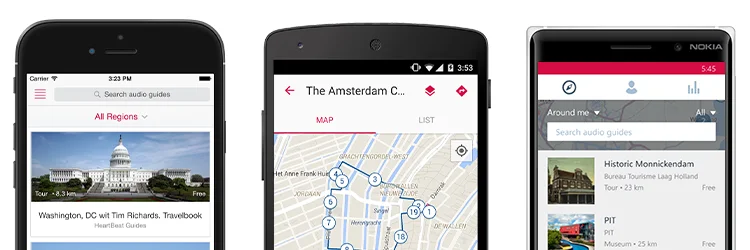Audio tour Delaware and the Revolutionary War
- Download the app
- iOS
- Android
- Windows Phone
There are many causes for the Revolutionary War, including a series of British acts of Parliament such as the Sugar Act, the Stamp Act and the Townsend Acts . Over decades the American colonists had become increasingly angered at the British crown.
Delaware sent delegates to the First and Second Continental congresses. Two of the three representatives voted for independence in 1776 and all signed the final document. Later that year, what had been The Three Counties adopted a constitution and officially became the state of Delaware. Before the outbreak of fighting, Delaware had developed an effective militia system; despite its small size. The state supplied more than 4,000 men for the American cause.
Only one engagement of significance occurred in Delaware, the Battle of Cooch's Bridge (near Newark, Delaware), the first action of the Philadelphia campaign. In the fall of 1777, British forces landed in Maryland and advanced toward Philadelphia. To delay these forces, the American soldiers staged an ambush and extracted a heavy toll among the redcoats and Hessians. However, the British forces regrouped and mounted a bayonet charge that sent the Americans fleeing, leaving weapons and bedrolls in their wake. Immediately after the rout, the British defeated Washington’s forces at Brandywine Creek, a few miles across the border in Pennsylvania. The redcoats followed this success by launching a surprise attack against Wilmington and managed to capture the president (governor) of Delaware. Source: Online Highways, Florence, Oregon.
The Delaware Line was a formation within the Continental Army. The term "Delaware Line" referred to the quota of one infantry regiment which was assigned to Delaware at various times by the Continental Congress.
The smallest of the state lines belonged to Delaware. On 9 December 1775 the Continental Congress authorized a single regiment to serve for a year, and the state government recruited it in early 1776, with John Haslett as colonel.
Some of the companies saw their first action on the shores of Delaware Bay by capturing a boat from the Royal navy frigate, the HMS Roebuck.
The regiment achieved a higher level of training than many other units because its adjutant was a former British captain. It went to New York City and gained fame during the defensive battles in that campaign.
The regiment reenlisted for the duration of the war in 1777, now under the command of Colonel David Hall. The regiment continued to perform well in the main army, initially serving in the Maryland Division and in 1778 as a Virginia division.
It rejoined the Marylanders in 1779 and accompanied them south in the spring of 1780. It was shattered in the battle of Camden, with only enough men remaining to form two companies.
Those companies stayed in action through Nathanael Greene's campaign, with the other officers returning home. New recruiting enabled two more companies to join General George Washington for the siege of Yorktown, and then went to Greene to relieve the two veteran companies.
The last of the regiment went on furlough in early 1783, and was formally disbanded on 15 November of that year.
Tour stops
Reviews
Download the free izi.TRAVEL app
Create your own audio tours!
Use of the system and the mobile guide app is free


